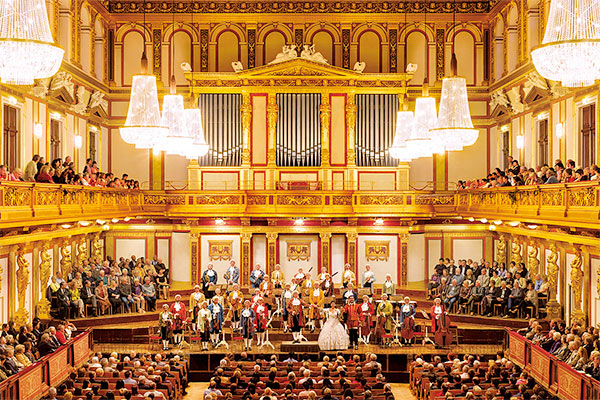The Significance of Musical Tone
I’ve received a lot of email regarding yesterday’s post on the use of multiple close up microphones as opposed to the tried and true methodologies used by most engineers when capturing a classical ensemble. There are several fundamental questions that come to mind? What is the ideal musical tone? Who defines what is and what isn’t the right musical tone produced during a live performance? How is that “ideal” sound recorded and subsequently delivered to those that wish to enjoy a particular recording or performance? And finally…what role does the auditorium play is the establishment of the ideal musical tone?
First, let me state that we’re talking about classical music or perhaps a sizable jazz ensemble. The notion that Sir George Martin, Don Was or Jimmy Jam and Terry Lewis were in search of an “ideal” musical tone for The Beatles, The Stones or Janet Jackson makes no sense at all. Record producers are looking to produce hit records and have no interest in anything except getting the right groove, musical “parts”, arrangement and appropriate vocal…the only ideal that they are interested in is the ideal spot on the top 100 pop chart!
What is musical tone? Musicians of all genres spend countless hours practicing their instruments. And those instruments are crafted by instrument builders that have also spent countless hours developing their skills to produce instruments that sound like they’re supposed to sound. It’s likely that you’ve heard of Stradivarius, the 17/18th Century violinmaker. The 600 or so instruments that he produced during his lifetime are each worth millions of dollars and are regarded as the pinnacle of the violinmakers’ art. In the right hands, a Strad delivers the “ideal” violin sound, right? The same can be said of Steinway pianos, Martin acoustic guitars or ’57 Gold Top Les Paul electric guitars.
Figure 1 – Antonio Stradivari
But every musician strives for his or her own “personal” tone. Why else would Carl Verheyen (one of my favorite guitars and something spends 8 hours a day practicing his instrument!) spend two weeks experimenting with different 1/4″ guitar cords AND claim to hear a difference. I believe him. Carl and all other professional musicians want both an ideal tone AND their own personal variant of the ideal. In many ways, they want to be as distinguishable as vocalists.
What I’ve just described is the micro view…the personal, single instrument ideal. The sound of a solo violin or flute or electric guitar must produce wonderful tones in isolation but they must also find a place within an ensemble. After all, one of the best experiences I’ve ever had is playing music with other musicians. It didn’t matter whether there was an audience present…making music is lots of fun!
So we have musical tone as produced by a single instrument and we have musical tone in the aggregate. The sound of violin or even a couple of fiddles is NOT the same as an entire string section. That’s why there are some many string players in a symphonic orchestra. The players in the first violin section of a symphony orchestra play as an ensemble…their personal tone is different because the aesthetic is different. What works great as musical tone for a solo violin wouldn’t necessarily work as a group of 16 performers? We’ll never get the chance, but I don’t think having 16 Itzhak Perlman’s and 16 Stradivarius instruments as your first violin section would work.
Figure 2 – A Baroque Hall
Finally, there’s the contribution of the room or auditorium in which the ensemble is playing. Some rooms contribute a great deal to the overall musical tone as perceived by a listener in the “best seat in the house” and others don’t. In the Baroque period, performances were held in the ornate private halls of the aristocracy or in the vaulted stone churches. The amount of reverb was small in the private spaces and over the top in the big cathedrals. And don’t forget that secular music happened in the open air or in small non-reverberant spaces.
Subscription concertgoers learn which seats have the best sound. The first row may be desirable from a visual perspective but it is not the best place to hear a concert. If you move back 15-20 rows you’re going to get a better blend of the direct sound vs. the reflected sound coming from the walls and ceiling (maybe even panel floating above the orchestra). The amount of direct vs. reflected sound is often misstated. Remember the “inverse square rule” from yesterday (see More Detail at All Levels) If the sound has to travel to the back wall and then return to you seat a few rows from the front of the stage, it loses almost all of its energy. The ratio between direct and reflected sound is about 80/20…meaning 80% is direct and 20% comes from the reverb. Of course, this changes with your location in the hall AND your personal preferences, but it’s a blend that works for me.
What if you had the chance to stand next to the conductor during a performance of your favorite symphony? You’d be getting almost all direct sound…no reflections. And the experience would be completely different than sitting in the audience. Would it be better or not? That’s up to your own personal taste. On AIX Records tracks, you get a chance to compare the “stage” perspective vs. the “audience” pov.
Musical tone exists at the intersection of personal music making, ensemble performances and acoustic spaces. There are no hard and fast rules as to what is ideal. We’ve been locked into thinking that recording engineers and producers should be striving to re-create the sound and experience of a live concert in your living room or home theater. Who says this is the only way to enjoy music? Take a listen to a traditional recording of Brandenburg Concerto No. 3 and then listen to the stereo AND multichannel AIX Records versions.
You might be surprised that you’re like me and prefer the intimate sound produced by being close to the sound sources.



